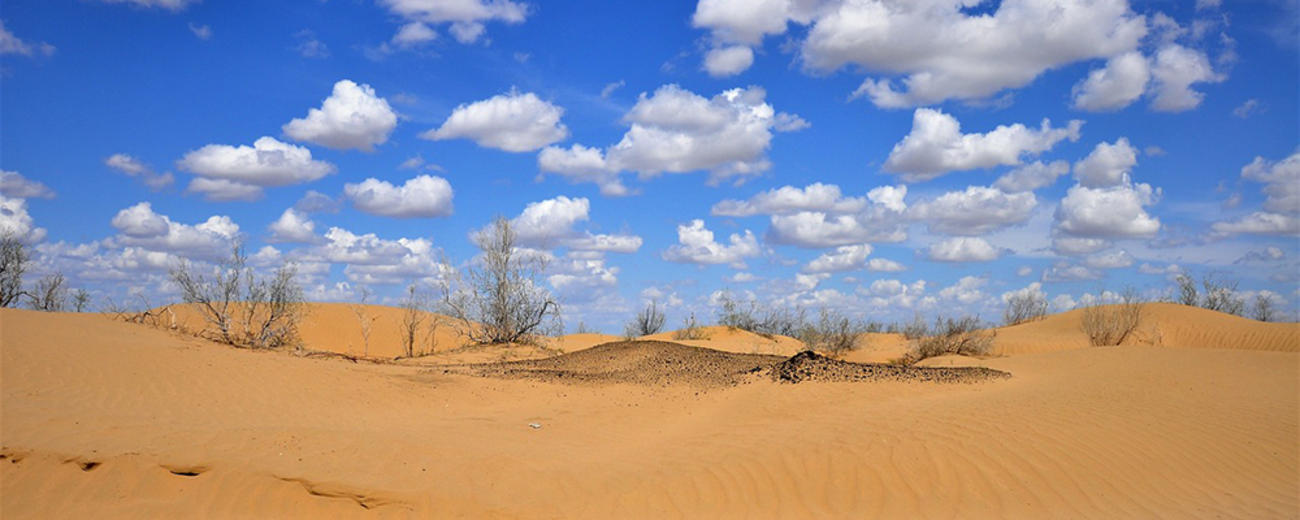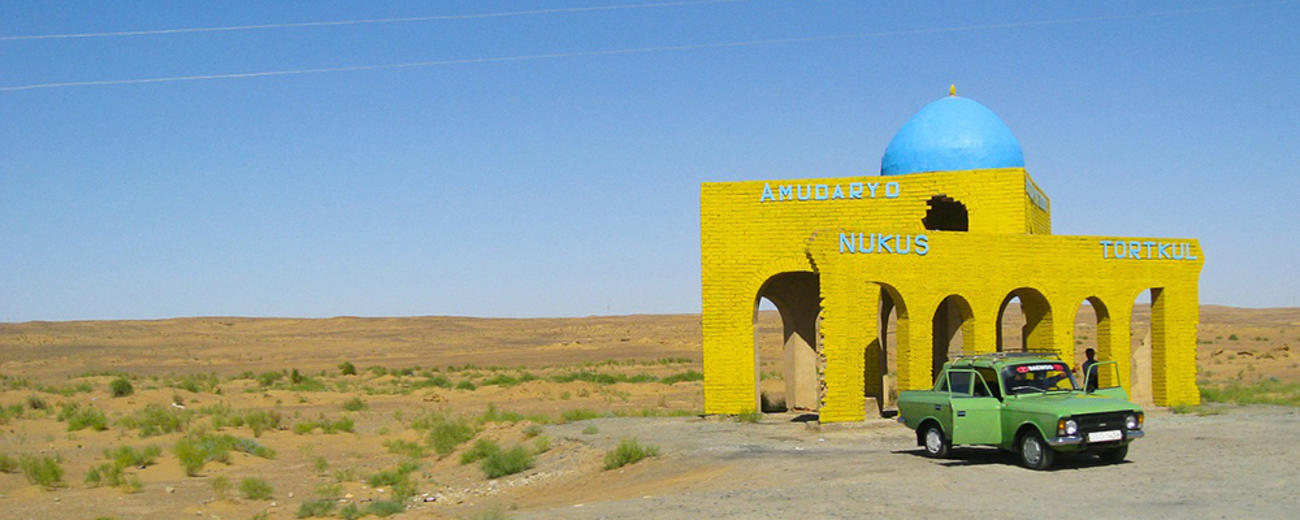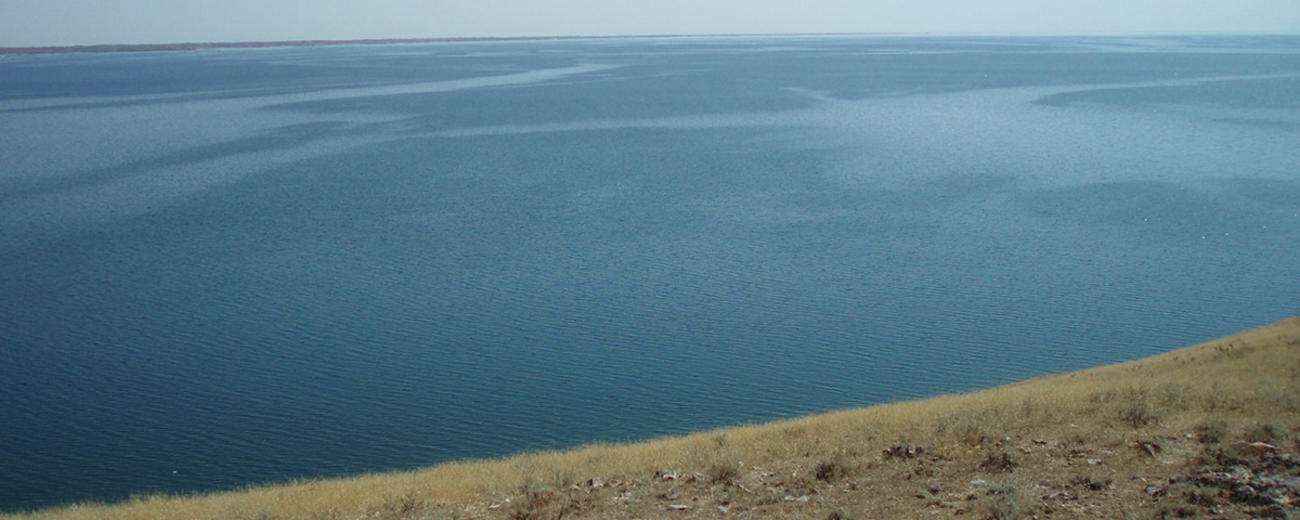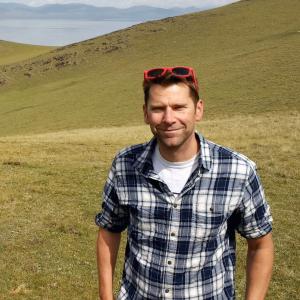The Kyzylkum Desert looks big enough on a map, but its true size is only known to those who have journeyed across it. Stretching for hundreds of miles across harsh terrain, the brave traders who pioneered the silk road would spend weeks crossing it, staring out at the sand. The sand inspired the name Kyzylkum, which means “red sand” in the local languages, referring to the distinct color of the desert.
Thankfully the desert is as beautiful as ever but much more inviting thanks to the tools of modern travel. Journeying into the heart of the Kyzylkum is still an unforgettable thrill, but it doesn’t require that travelers risk life and limb. If you take some time to learn about the Kyzylkum, you’ll see why adventurers through the ages have braved its red sands in search of treasures both literal and spiritual.

Geography
The Kyzylkum Desert is defined by the two rivers it stretches between, the Syr Darya in the North and the Amu Darya in the South. It’s an international wonder, stretching across the borders of Kazakhstan, Uzbekistan, and Turkmenistan. It’s the sixteenth largest desert in the world and the fifth largest in Asia, spreading across an area of more than 115,000 square miles. This impressive size makes the Kyzylkum Desert larger than countries like Iceland, South Korea, and Ireland.
Weather
The Kyzylkum Desert is so dry and desolate due to the weather. All year round there’s hardly any rainfall. Throughout the year the desert is likely to receive somewhere between four and eight inches of rain. Keep in mind that this precipitation isn’t evenly divided. It mostly falls in the winter and spring, with a long stretch of bone-dry weather stretching through the Summer and Fall. The temperature in the area swings dramatically over the course of a year. In January the temperatures average around 40 degrees Fahrenheit while the July average is around 82 degrees Fahrenheit. But while those temperatures might not seem too extreme visitors shouldn’t let their guards down, in the summer highs have been known to climb above 120 degrees Fahrenheit!

Local History
The desert is a beautiful destination for short-term visitors but its a harsh environment for anyone seeking to set down roots. Still, locals have found ways to scratch out a living in the desert for thousands of years. Archeological evidence shows us that the Andronovo people lived in the area as far back as 2100 BC. Throughout most of the region’s history, the area has mainly been populated by nomadic tribes that raise livestock on the open plains. There are also a few areas along the Syr and Amu Darya rivers where regular flooding allows for farming.
Today the region’s economy is built around what’s under the ground rather than what’s above it. Rare minerals and natural gases have been discovered under the desert, and a number of mining towns have popped up across the desert to tap into its hidden wealth. Still, even after decades of economic development the region is very sparsely populated.
The cultural and political history of the area is every bit as interesting as its natural wonders. It has changed hands many times over the years, from Alexander the Great to the Persian Empire, from the Soviet Union until it was finally divided between the modern countries that share control today. Many of the people who live in the area have deep roots, with ancestors who have seen the rise and fall of many great empires. It’s something you can see when looking at historical monuments and in the faces of the people who call the desert home.

Aydar Lake
Most of the desert is dry as a bone, but it is also home to one of the largest manmade lakes on earth, Aydar Lake. To make things even more interesting, the lake was created unintentionally. While the area was a part of the Soviet Union government officials decided to dam up the local rivers to try and increase the amount of farmland in the desert. But rainfall exceeded expectations and lead to water overflowing and pouring into nearby lowlands where the water was trapped. Over time this has lead to the creation of a lake that covers more than 1,200 square miles. All said this lake contains more than ten and a half cubic miles of water! All of this because Soviet bureaucrats didn’t account for all of the variables when building their dams. Today the lake is a popular tourist destination and a living testament to humanity’s ability to reshape the earth, intentional or otherwise.
Discovering Desert Beauty
The Kyzylkum Desert is a land of hidden treasures. If you know where to look, you’ll find rivers, mountains, plains, lakes, and valleys. In the midst of the red sand, all sorts of animals have managed to find their niche. Tourists who come through the desert get to witness life at its most tenacious. They’ll also be able to ride camelback across the desert, explore ancient cities, and get to know some of the most fascinating locals you’ll find anywhere on earth.
If you want to explore this magnificent stretch of nature yourself, there’s no better way to do it than our 5 Stans of Central Asia Tour. This is the ultimate way to experience the Kyzylkum Desert and even more of the region. Anyone looking for a trip that combines ancient history, natural beauty, and high adventure should consider a journey into the Kyzylkum Desert.
